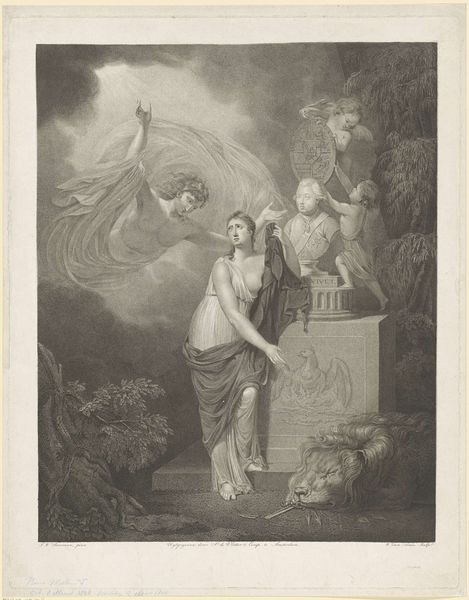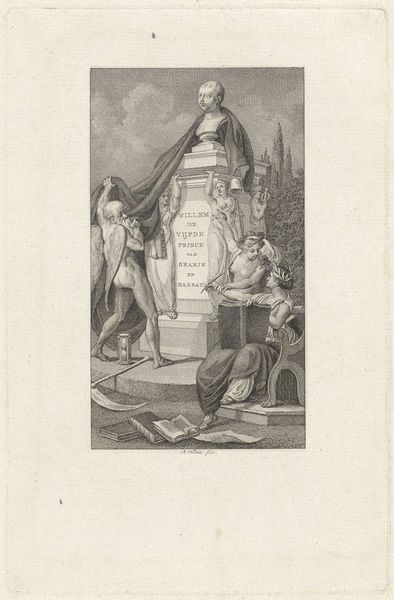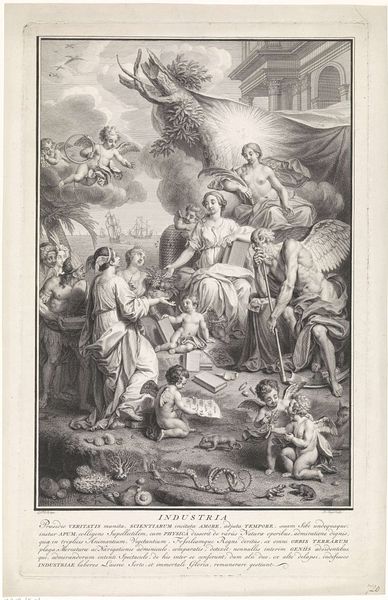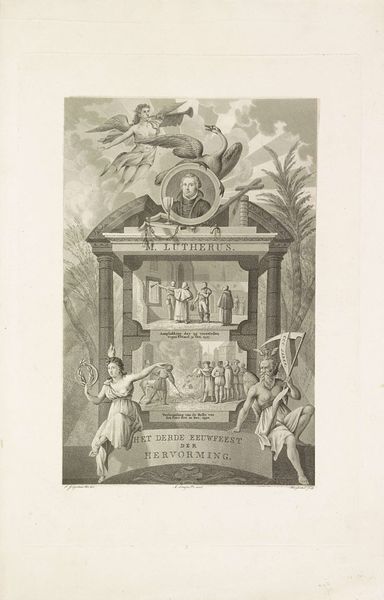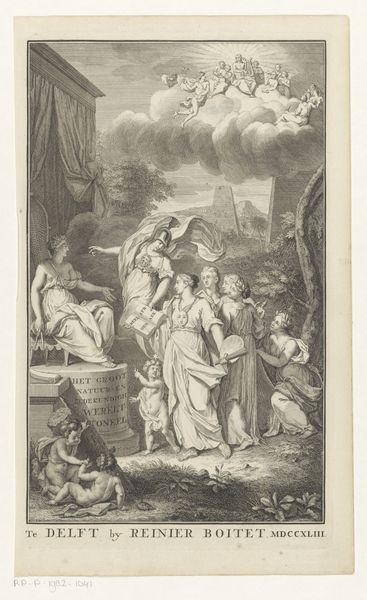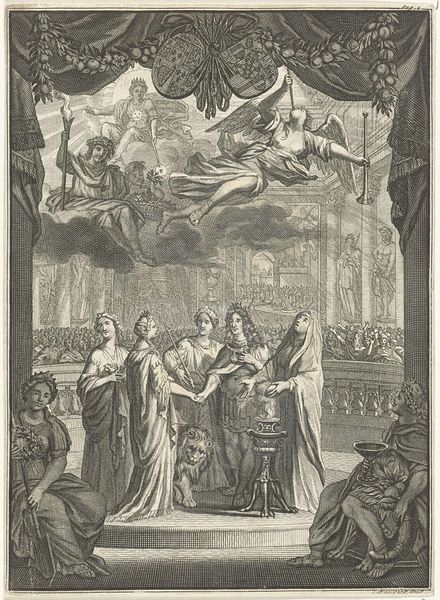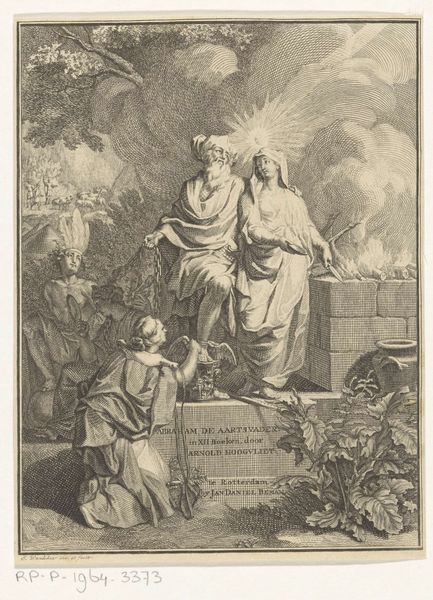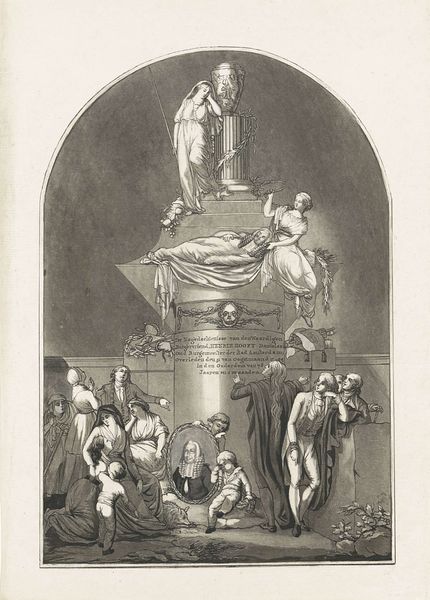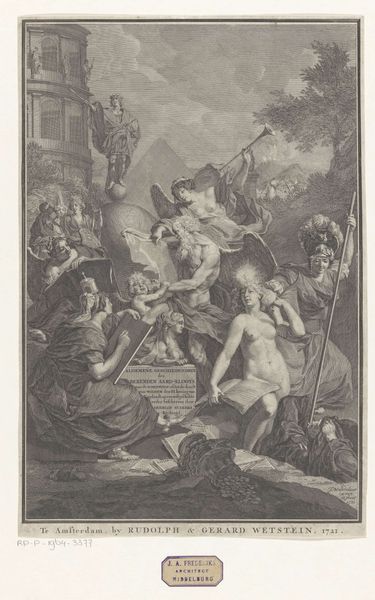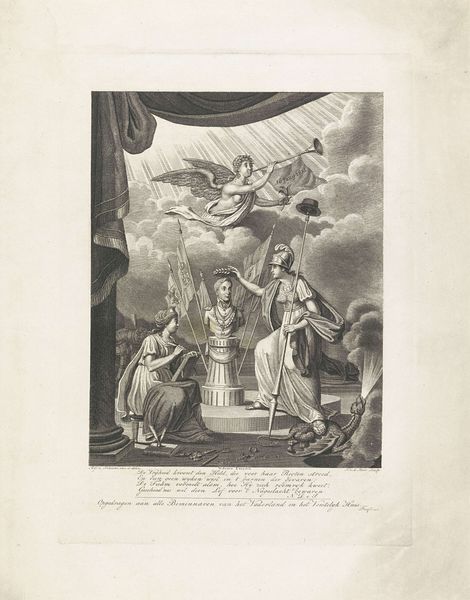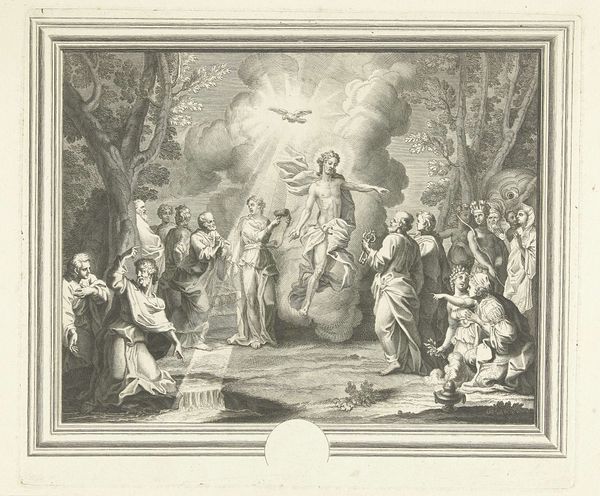
Monument voor het derde eeuwfeest van de Hervorming, 1517-1817 1817
0:00
0:00
print, engraving
#
neoclacissism
#
statue
#
allegory
# print
#
old engraving style
#
landscape
#
history-painting
#
engraving
Dimensions: height 513 mm, width 412 mm
Copyright: Rijks Museum: Open Domain
Editor: Here we have "Monument for the Third Centenary of the Reformation, 1517-1817," an engraving from 1817 currently held at the Rijksmuseum, attributed to Walraad Nieuwhoff. It's quite dense with symbolism, almost like a stage set. What's your take on it? Curator: Well, consider the context. This print commemorates the 300th anniversary of the Reformation. The figures aren't just decorative; they represent powerful socio-political and religious forces at play in the early 19th century. Who do you think the central female figure embodies? Editor: My first guess would be maybe an allegorical figure representing the Reformation itself? She seems to hold a book, perhaps the Bible? Curator: Precisely. The book signifies the importance of scripture in the Protestant movement. Notice how she stands triumphant over the figures below, suggesting the triumph of Protestantism over its opposition. The snake is definitely an interesting addition here! It creates quite an impact on the composition, wouldn’t you say? Editor: Yes, definitely! Now that you mention it, it's hard to ignore that snake being crushed at her feet. And what about the bust? Is that Martin Luther? Curator: Good eye! Indeed it is Luther, presented as a respected leader. What's interesting is how the monument itself is being presented, in the midst of idealized, almost fantastical imagery. It elevates the historical event to the level of myth. This points to the role imagery played in shaping public perception. It served not just to record but to construct a specific narrative. Editor: So it's less about historical accuracy and more about projecting a particular idea of the Reformation's legacy? Curator: Exactly. And that's where understanding the historical and socio-political background becomes crucial. Art, like this print, participates actively in the shaping of collective memory and the affirmation of societal values. Editor: That's really fascinating. I had been thinking about it only formally, but it’s incredible how much the context changes my understanding of the whole thing. Curator: Absolutely, and understanding art is as much understanding social history.
Comments
No comments
Be the first to comment and join the conversation on the ultimate creative platform.
